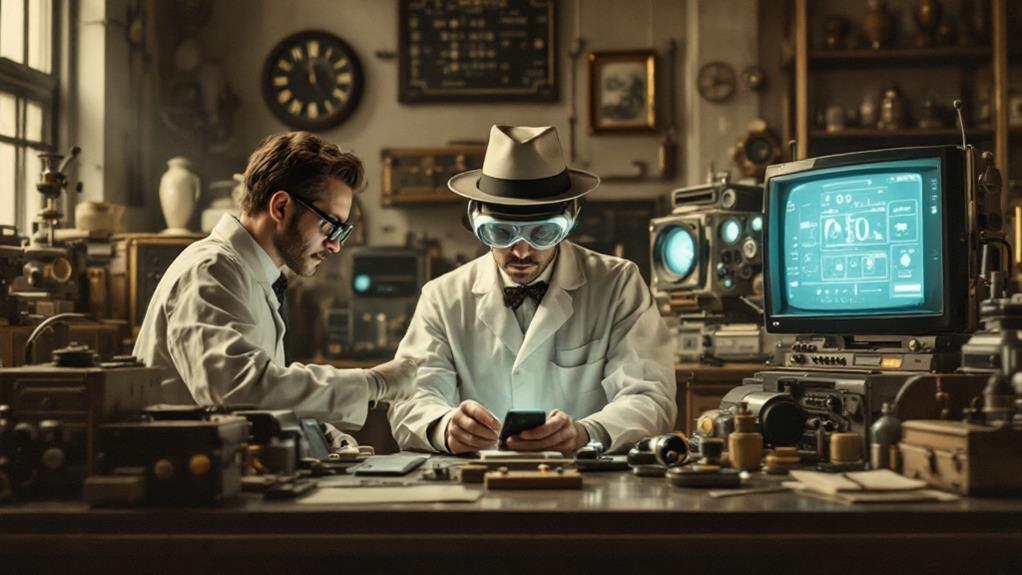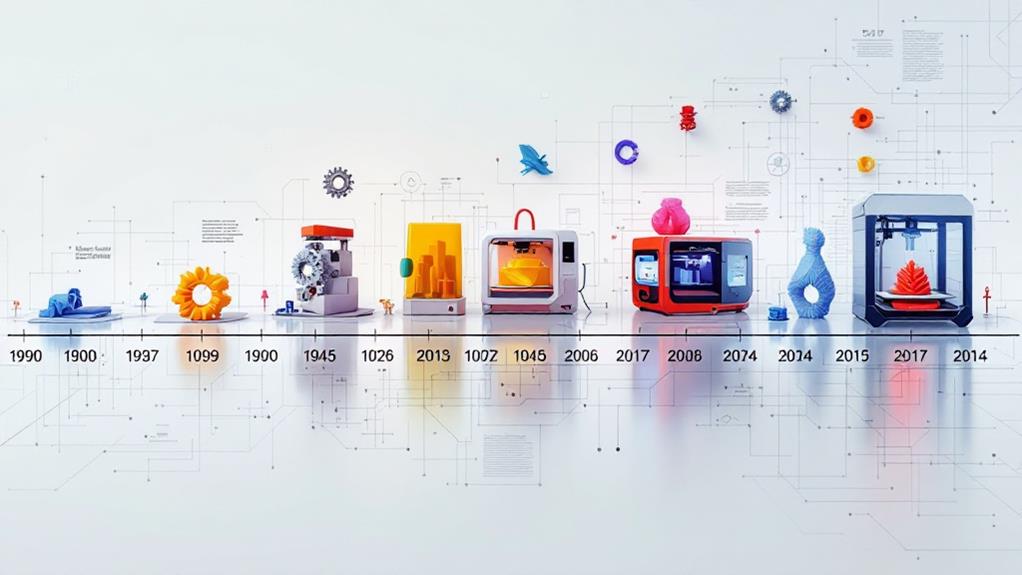Top Technology Inventions of the 2000s: Innovations That Changed Our World
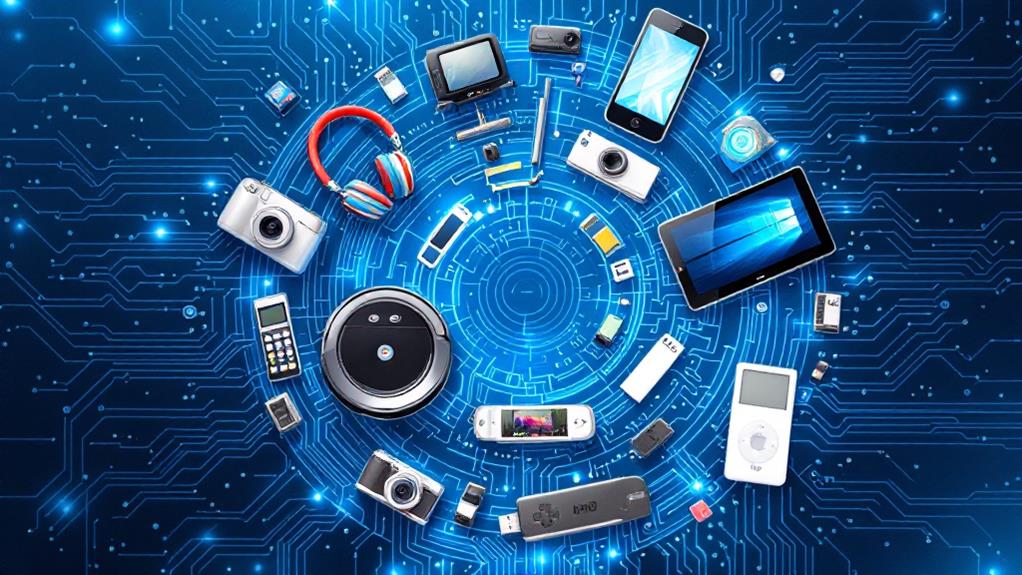
The 2000s brought innovative developments that reshaped your daily life. Social media platforms like Facebook revolutionized how you connect and share. Smartphones put powerful computing in your pocket, while Wi-Fi untethered you from cables. YouTube altered video consumption and creation, making anyone a potential content creator. GPS navigation systems changed how you travel and find your way. Cloud computing allowed you to access your data from anywhere, anytime. These inventions, along with e-readers, voice assistants, and streaming services, fundamentally altered how you work, communicate, and entertain yourself. But there's even more to uncover about this impactful decade.
Social Media Platforms
The digital revolution of the 2000s brought us a transformative development: social media platforms. These online communities revolutionized how we connect, share, and communicate globally. You've likely experienced the rise of platforms like Facebook, Twitter, and LinkedIn, which emerged during this decade and rapidly became integral parts of our daily lives.
Social sharing platforms redefined personal and professional networking. You could now reconnect with old friends, stay updated on family events, and build professional connections with ease. These platforms introduced features like status updates, photo sharing, and instant messaging, creating new ways for you to express yourself and interact with others.
The impact of social media extended beyond personal use. Businesses found new avenues for marketing and customer engagement. News organizations adapted to the fast-paced nature of information sharing. Even political movements gained momentum through these platforms.
As social media evolved, it brought challenges too. You've had to manage issues of privacy, digital addiction, and information overload. Despite these concerns, social media platforms remain a defining technological innovation of the 2000s, fundamentally altering how you engage with the world around you.
Smartphones
Smartphones' emergence in the 2000s marked a pivotal moment in personal technology. These pocket-sized computers revolutionized how you communicate, work, and navigate the world. With the introduction of the iPhone in 2007 and subsequent Android devices, smartphones quickly became an indispensable part of daily life.
These devices combined multiple functions into one sleek package. You could now make calls, send messages, browse the internet, and run applications all from a single handheld device. The integration of mobile cameras transformed how you capture and share moments, turning everyone into potential photographers and videographers.
Smartphones also altered the way you manage your finances. Mobile payments and banking apps put your wallet in your pocket, allowing you to make transactions with just a tap. As app ecosystems grew, you gained access to a vast array of tools and services, from ride-hailing to food delivery.
The impact of smartphones extends beyond convenience. They've reshaped social interactions, work habits, and even how you consume entertainment. With constant connectivity and powerful computing capabilities, smartphones continue to evolve, influencing nearly every aspect of modern life.
Wi-Fi Technology
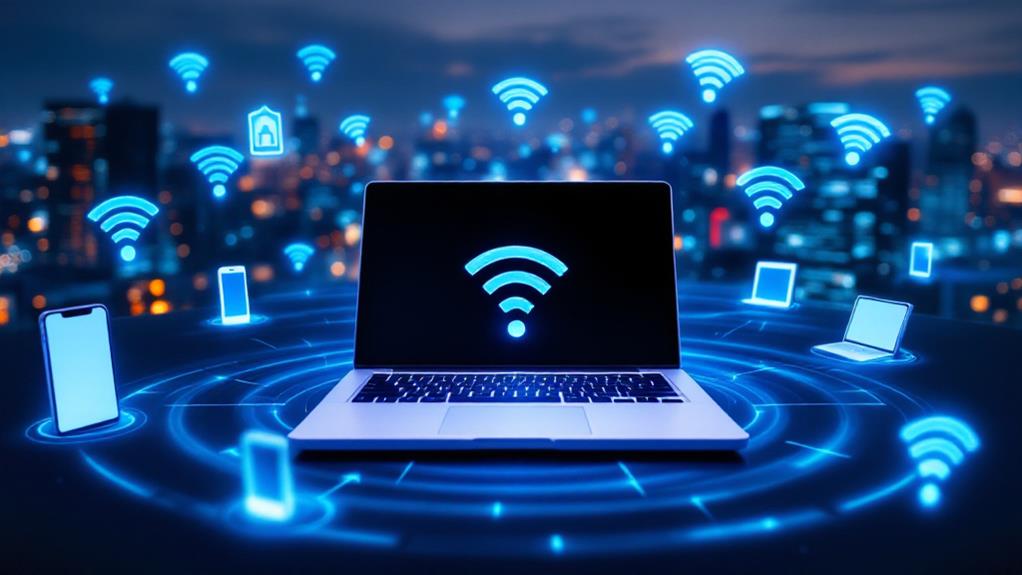
While smartphones revolutionized personal connectivity, Wi-Fi technology altered how you access the internet. Introduced in the late 1990s and popularized in the 2000s, Wi-Fi quickly became the standard for wireless internet connections. You no longer needed to be tethered to a physical cable to surf the web or check your email.
Wi-Fi's convenience and flexibility transformed homes, offices, and public spaces. You could suddenly work from your couch, backyard, or local coffee shop. The technology's changing standards continuously improved wireless bandwidth, allowing for faster speeds and more reliable connections. This paved the way for streaming services, online gaming, and video conferencing to thrive.
As Wi-Fi became ubiquitous, concerns about wireless security grew. You had to learn about encryption protocols like WEP, WPA, and WPA2 to protect your network from potential intruders. Despite these challenges, Wi-Fi's benefits far outweighed its risks. The technology enabled the rise of smart home devices, allowing you to control your thermostat, lights, and security systems remotely. Wi-Fi's impact on your daily life has been significant, making internet access more accessible and versatile than ever before.
YouTube
Founded in 2005, YouTube quickly became a cultural phenomenon that revolutionized how you consume and create video content. This platform allowed you to upload, share, and watch videos on virtually any topic imaginable. From DIY tutorials to music videos, YouTube became an endless source of entertainment and information at your fingertips.
As YouTube grew, it introduced new features that transformed the virtual landscape. You could now subscribe to channels, leave comments, and interact with content creators directly. The platform's popularity led to the rise of internet personalities and influencers, who built entire careers around their YouTube presence.
YouTube also paved the way for internet monetization, allowing content creators to earn money through advertising revenue and sponsorships. This shift created new opportunities for aspiring filmmakers, comedians, and educators to reach global audiences.
The platform's impact extended to various industries, including video game streaming. Gamers could now broadcast their gameplay live, attracting millions of viewers and turning gaming into a spectator sport. YouTube's influence on media consumption habits continues to shape how you engage with digital content today.
GPS Navigation Systems
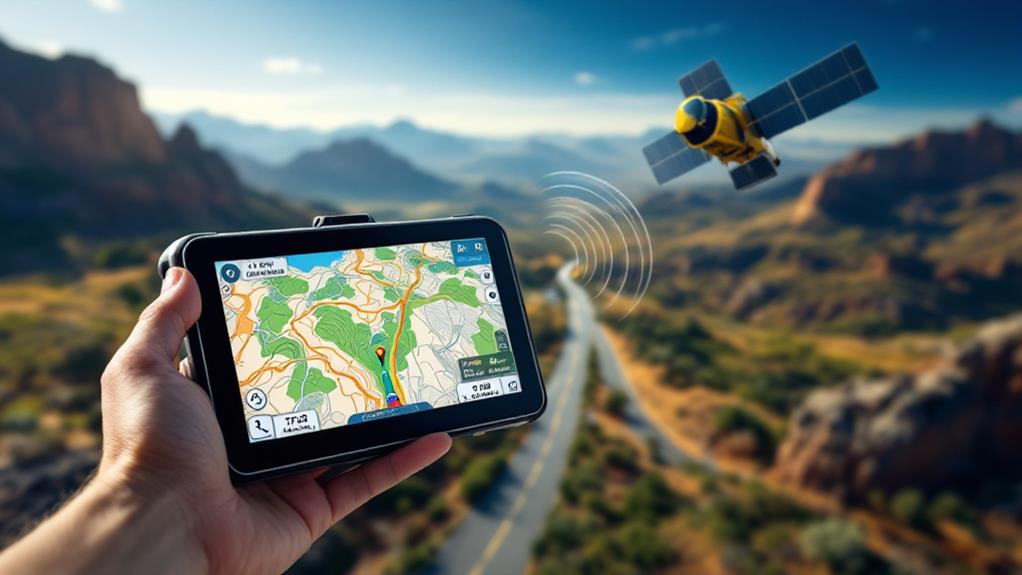
Revolutionizing travel and wayfinding, GPS positioning systems became widely available to consumers in the early 2000s. These devices leveraged satellite connectivity to pinpoint your exact location and guide you to your destination with unparalleled accuracy. You no longer had to rely on paper maps or stop for directions; instead, you could simply input an address and follow turn-by-turn instructions.
GPS positioning systems changed how you move through both familiar and unfamiliar territories. They offered real-time traffic updates, helping you avoid congestion and find the fastest routes. Digital mapping technology allowed for frequent updates, ensuring you always had access to the most current road information.
These devices weren't limited to cars; handheld GPS units became popular for hiking, geocaching, and other outdoor activities. As smartphones emerged, GPS functionality was integrated into mobile apps, making navigation even more accessible.
The impact of GPS positioning systems extended beyond personal use. They revolutionized logistics and delivery services, improving efficiency and reducing fuel consumption. Emergency services also benefited, with faster response times and improved location accuracy for distress calls. GPS technology has become an integral part of modern life, shaping how you interact with and move through the world around you.
Cloud Computing
The emergence of cloud computing in the 2000s altered how businesses and individuals store, access, and process data. This revolutionary technology allows you to store your information on remote servers, rather than on your local device. You can access your files, applications, and services from anywhere with an internet connection, freeing you from the constraints of physical hardware.
Cloud computing relies on vast data centers spread across the globe, housing powerful servers that handle the processing and storage needs of millions of users. These centers are maintained by tech giants like Amazon, Google, and Microsoft, ensuring high reliability and security for your data.
With remote access as a key feature, you're no longer tethered to a single device or location. Whether you're working on a presentation at home, collaborating with colleagues across continents, or accessing your photos on vacation, the cloud keeps everything synchronized and up-to-date.
This technology has reshaped business operations, enabling scalability, cost-efficiency, and improved collaboration. It's also changed how you interact with technology in your daily life, from streaming music and movies to backing up your smartphone data automatically.
E-readers

Electronic reading devices, or e-readers, burst onto the tech scene in the late 2000s, altering how you consume literature. These portable e-book devices revolutionized reading by offering a digital alternative to traditional paper books. With the ability to store thousands of titles in a single compact device, you'll never run out of reading material on the go.
E-readers have converted the digital book publishing industry, making it easier for authors to self-publish and reach a wider audience. They've also changed how you interact with text, allowing you to adjust font sizes, search for specific words, and even look up definitions instantly.
Long battery life, often lasting weeks on a single charge
E-ink displays that mimic the look of paper and reduce eye strain
Built-in lighting for reading in low-light conditions
Wireless connectivity for easy book purchases and downloads
Lightweight design for comfortable extended reading sessions
As e-readers continue to evolve, they're becoming more versatile, with some models offering water resistance, audiobook support, and even web browsing capabilities. You'll find that these devices have made reading more accessible and convenient than ever before.
Voice Assistants
In addition to e-readers, voice assistants emerged as an innovative technology in the late 2000s. These intelligent virtual assistants revolutionized the way you interact with your devices and manage your daily tasks. By simply using your voice, you can now control various aspects of your digital life, from setting prompts to searching the internet.
Voice assistants like Apple's Siri, Amazon's Alexa, and Google Assistant have become integral parts of smartphones, smart speakers, and other connected home devices. They've transformed how you access information, control your smart home, and even shop online. With natural language processing and machine learning capabilities, these assistants continuously improve their understanding of your commands and preferences.
The integration of voice assistants into various products has created a more seamless and hands-free user experience. You can now adjust your thermostat, turn on lights, or play music without lifting a finger. As the technology evolves, voice assistants are becoming more sophisticated, offering personalized recommendations and anticipating your needs based on your habits and routines. This innovation has paved the way for a more connected and efficient lifestyle in the modern era.
Online Streaming Services
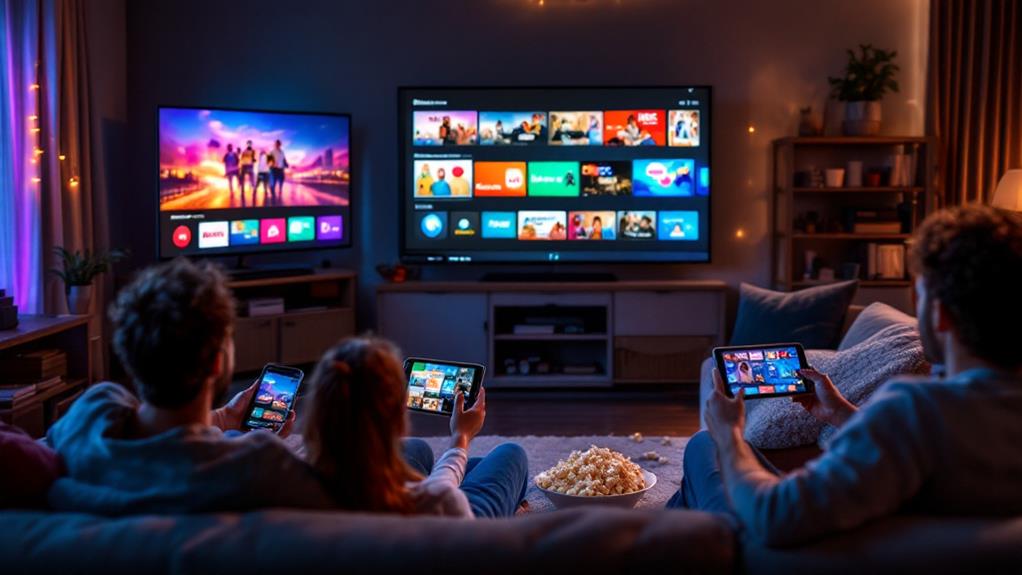
Streaming giants like Netflix, Hulu, and YouTube revolutionized entertainment in the 2000s. These platforms unearthed how you consume media, offering on-demand content at your fingertips. No longer bound by TV schedules or physical media, you can now binge-watch entire series or detect new content with ease.
Online streaming services manipulate sophisticated algorithms to provide personalized recommendations, tailoring your viewing experience based on your preferences and watch history. This technology has made content discovery more efficient and enjoyable, introducing you to shows and movies you might have otherwise missed.
The impact of streaming services extends beyond convenience:
- They've changed how content is produced and distributed
- They've empowered independent creators to reach global audiences
- They've sparked fierce competition in the entertainment industry
- They've influenced social interactions and cultural conversations
- They've accelerated the decline of traditional cable TV
As streaming services continue to evolve, they're shaping the future of entertainment. With improved video quality, interactive features, and expanding libraries, these platforms are constantly innovating to enhance your viewing experience. The rise of online streaming has undoubtedly reshaped how you consume media, making it an essential technology invention of the 2000s.
Blockchain Technology
Blockchain technology emerged as another pioneering innovation of the 2000s, revolutionizing digital transactions and data management. This decentralized system allows you to securely record and verify transactions without the need for intermediaries. It's like a digital ledger that's distributed across multiple computers, making it nearly impossible to alter or hack.
You've probably heard of Bitcoin, the most famous application of blockchain technology. But it's not just about cryptocurrencies. Blockchain has potential uses in various industries, from supply chain management to voting systems. It enables transparent and tamper-proof record-keeping, which can enhance trust and efficiency in many processes.
The technology behind blockchain also supports the development of decentralized applications, or dApps. These are programs that run on a distributed network rather than a centralized server, offering increased security and resistance to censorship.
As blockchain continues to evolve, you'll likely see its impact grow. It's already changing how we think about digital currencies and online transactions. In the future, it could reconfigure, reshape, or reconstruct how you interact with everything from government services to social media platforms, offering a new level of security and control over your digital life.
